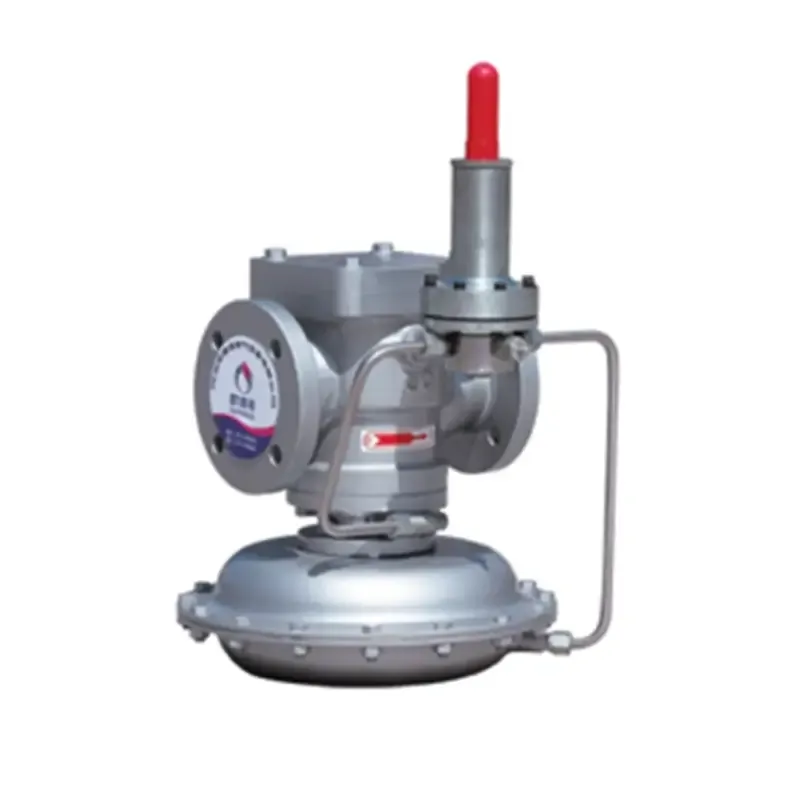
Dec . 26, 2024 14:22
Back to list
صمامات تخفيف الضغط
Understanding Pressure Relief Valves Importance and Functionality
Pressure relief valves (PRVs) are critical components in various industries, ensuring the safe operation of equipment and systems that handle fluids and gases. These valves play a vital role in preventing overpressure conditions that could lead to catastrophic failures. In this article, we will explore the importance, functionality, and types of pressure relief valves, alongside industry applications.
The Importance of Pressure Relief Valves
Pressure relief valves are designed to protect equipment such as boilers, pressure vessels, and piping systems by automatically releasing pressure when it exceeds a predetermined level. Overpressurization can result in severe accidents, including explosions or equipment failures, leading to substantial financial losses and endangering lives. Therefore, the proper selection, installation, and maintenance of PRVs are crucial in any system that handles pressurized substances.
Functionality of Pressure Relief Valves
The primary function of a PRV is to maintain pressure within a safe operating range. This is achieved through two key mechanisms the set pressure and the blow-off. The set pressure is predetermined based on the specifications of the system, while the blow-off mechanism operates when the pressure reaches that threshold. At this point, the valve opens, allowing excess pressure to escape, and prevents the system from becoming dangerously overpressurized.
Pressure relief valves can operate in two main ways spring-controlled and pilot-operated. Spring-controlled valves utilize a spring mechanism, allowing the valve to open at the set pressure by pushing against the spring's resistance. In contrast, pilot-operated valves use a small pilot valve that controls the main valve based on system pressure. These pilot-operated valves can provide more precise control, making them suitable for high-pressure applications.
Types of Pressure Relief Valves
There are several types of pressure relief valves, each designed for specific applications and industries
صمامات تخفيف الضغط

1. Spring-Loaded Relief Valves This is the most common type, utilizing a spring mechanism to open at a specific pressure. They are found in various applications, including gas pipelines and steam systems.
3. Rupture Disc Valves These do not have a movable part like traditional valves. Instead, they are designed to burst at a specific pressure, providing a fast way to release pressure but with a one-time use.
4. Vent Valves Often used in conjunction with other types of PRVs, these valves allow for the safe venting of gases or vapors to prevent pressure buildup.
Applications of Pressure Relief Valves
Pressure relief valves are essential across numerous industries, including
- Oil and Gas They protect drilling and production equipment from pressure surges. - Chemical Processing PRVs safeguard reactors, storage tanks, and pipelines. - Power Generation Boilers and turbine systems utilize PRVs to manage steam pressure. - Manufacturing In systems that use compressed air, pressure relief valves prevent overpressurization.
Conclusion
In summary, pressure relief valves are indispensable for maintaining safety in systems that handle pressurized fluids and gases. Their design and operation are tailored to prevent hazardous conditions that could lead to severe accidents. Industries must prioritize selecting the appropriate type of PRV, ensuring proper installation, and conducting regular maintenance to safeguard both personnel and equipment. By understanding the role and functionality of pressure relief valves, companies can enhance their safety measures and operational efficiency, ultimately leading to a safer working environment.
Latest news
-
Safety Valve Spring-Loaded Design Overpressure ProtectionNewsJul.25,2025
-
Precision Voltage Regulator AC5 Accuracy Grade PerformanceNewsJul.25,2025
-
Natural Gas Pressure Regulating Skid Industrial Pipeline ApplicationsNewsJul.25,2025
-
Natural Gas Filter Stainless Steel Mesh Element DesignNewsJul.25,2025
-
Gas Pressure Regulator Valve Direct-Acting Spring-Loaded DesignNewsJul.25,2025
-
Decompression Equipment Multi-Stage Heat Exchange System DesignNewsJul.25,2025

